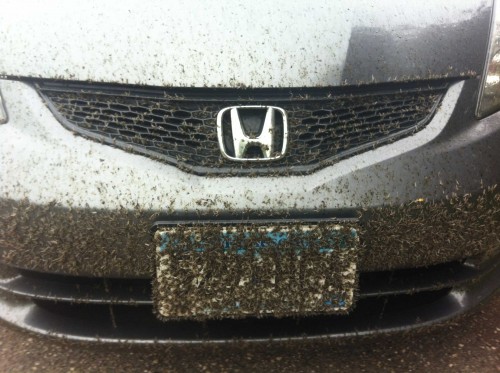Every year around this time, we can expect a sudden eruption of clouds of mayflies to emerge, as Gwen Pearson describes. There have been a few times I’ve been out driving when caught in it, and the car gets coated with brown dead bug smears, to the point where visibility is a serious problem.
But she also shows a video I found even more terrifying: this is a dying mayfly floating on the water, and she constantly dribbles out eggs, making a big pool of them on the bottom. And then one minute in, they start hatching!
Now I study an animal which develops very rapidly, the zebrafish, but this was shocking — you mean they go on a mating flight, drop to the water, and spew out eggs that develop into larval hatchlings in minutes? Impossible! Laws of thermodynamics! Cellular interactions and pattern forming mechanisms! The biochemistry couldn’t go that fast! Cell cycle times must be in milliseconds! Inconceivable! My brain is melting!
Fortunately, I read more closely.
Most mayflies lay their eggs immediately after mating; the eggs then take anywhere from 10 days to many months to hatch. Cloeon cognatum is an exception. This species is ovoviviparous, which means that a mated female holds her eggs internally until embryonic development is complete (about 18 days), after which she lays them in water and they hatch immediately. This female was dropped onto the water surface moments before the video started.
Whew. That’s better. And 18 day development time? Easy peasy. I guess I don’t have to hover around the margins of local lakes trying to catch a few minutes of development, once a year, after all.
By the way, here’s a photo of my car from last year, when I got caught driving by Lake Minnewaska one night:



I presume you have seen this:
http://www.crh.noaa.gov/arx/?n=mayflies_june232012
from a couple of years ago. There are other radar shots like it from this year. (Google is your friend…)
Ok, I’ll bite. Why “mayfly”? Shouldn’t it be “julyfly”?
We get them where I live only the locals call them “shadflies” for some reason. Driving on Lakeshore Drive sounds like you’re driving on bubble wrap.
Mayflies, mosquitoes, hailstorms, epic winters. Has anybody in Minnesota considered writing a new book for the Old Testament?
I’ve biked through similar swarms. That’s way more unpleasant.
I had to stop at a gas station and use the water hose (remember when stations used to have those?) to wash myself off and continue my ride. The front half of my body looked like your car bumper.
In Florida we have a similar situation with Love Bugs (Plecia nearctica). The Wikipedia article describes it pretty well. After arriving at my destination with several pounds of insect mush on my car, and knowing that tens of thousands of other cars did the same, I have wondered if there is any evolutionary effect on the population. Those that tend to congregate in open highway areas are dying by the billions but those that avoid such areas are surviving. Long term effect or no? How about with the Mayflies? Are there so many that the loss of a few billion is inconsequential?
Looks like your car picked up enough for a few decent hamburgers.
Jerry Coyne has a recent post on the subject with radar video and photos.
I wonder if PZ used the window cleaning thingamabob to clean the windshield? What a gooey mess that would be. How long were you driving through the cloud of flies? That mess is impressive!
This just in. http://www.flyfisherman.com/blogs/editors-notebook/massive-mayfly-hatch-biblical-proportions-triggers-three-car-crash/
I sat outside yesterday and a mayfly landed right on my shirt.
I was trying to imagine a way for an organism like this to really produce live offspring so soon after mating in this manner without violating any physical or biological laws. I think I came up with one, and it’s going into my folder of Xenobiology ideas.
The idea is that the “larvae” are actually a parthenogenically-reproduced all-female haploid generation, and it is they that are fertilised by the male while they are still inside their mother. The eggs of the “larvae” hatch while still inside their mother, develop differently for their diploid state, and after feeding on her innards eventually burst from the skin of the mother as flighted adults, the females already pregnant, ready to mate and begin over.
Because they fly in May in England and other such places that have a shorter winter than Minne-fucking-sota.